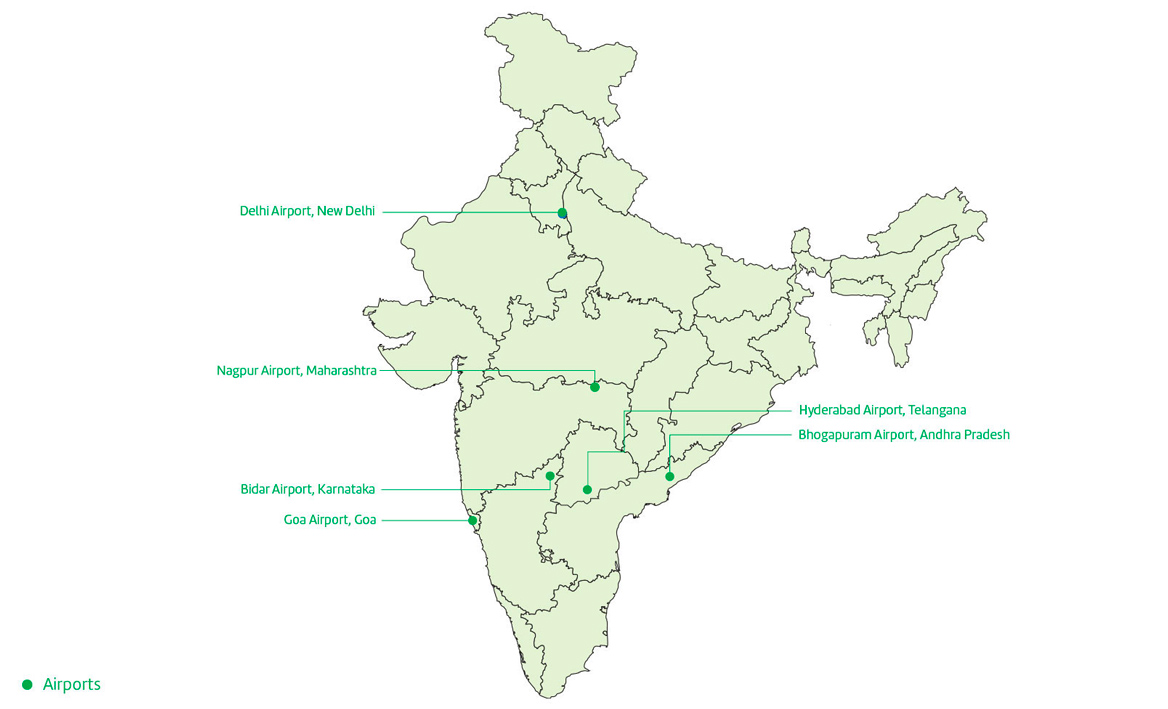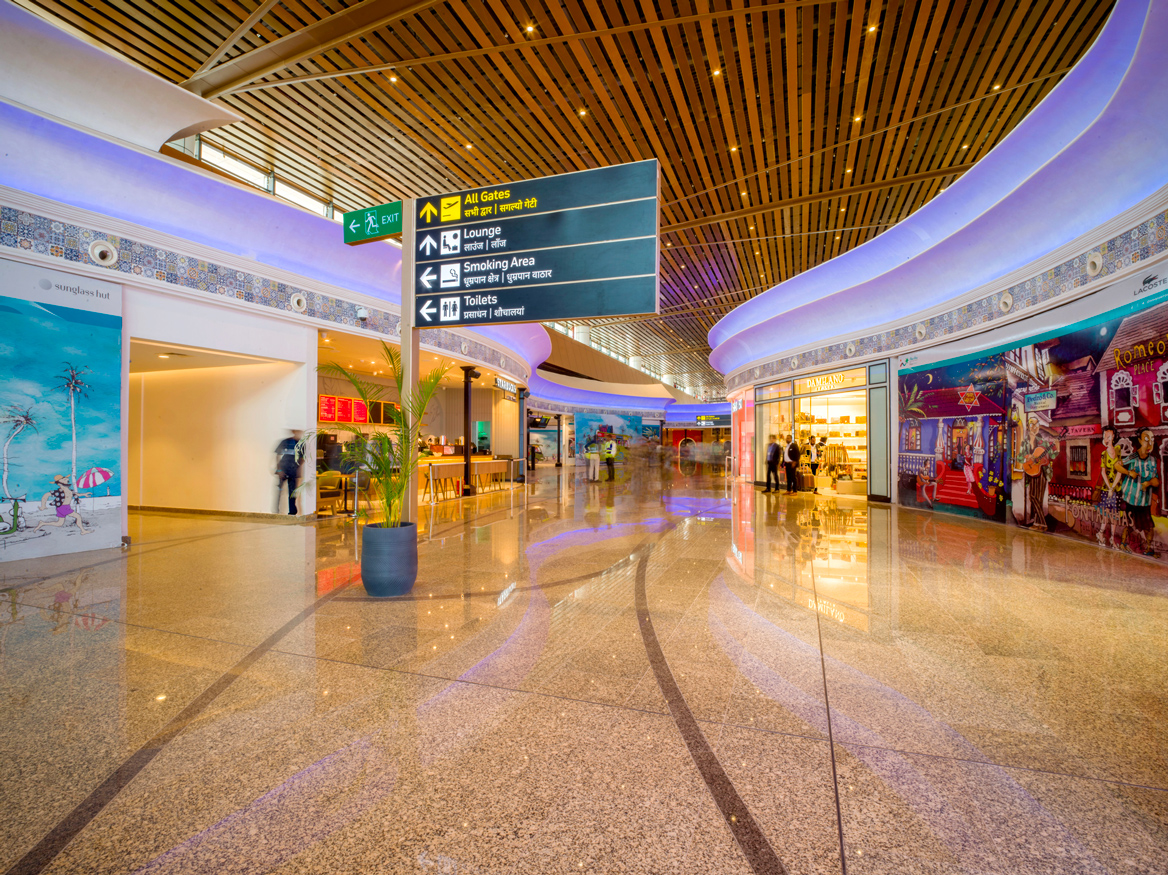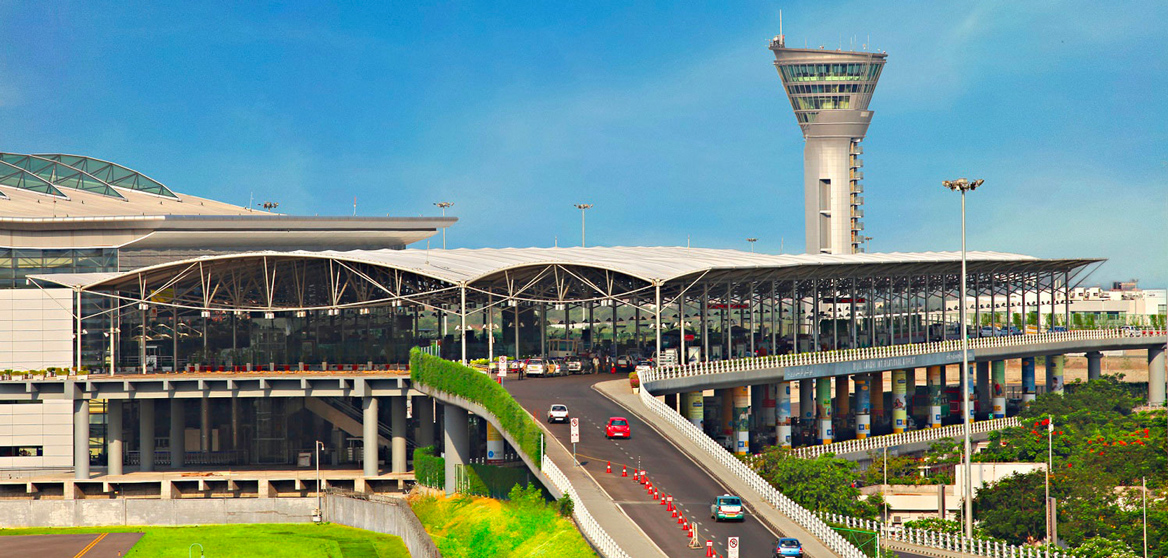GMR Airports: an integral part of India’s dynamic air travel industry
Like TAV Airports, GMR Airports Limited (GAL) stands out in the industry for the quality of its assets, operating seven airports in three countries (India, Indonesia and Greece), and the company has been listed on Indian stock markets since July 2024. As a leading airport group in a region with strong growth potential (traffic is expected to increase by 6.5% annually between now and 2038), GMR Airports is poised to seize new opportunities in India and Asia to further its expansion.
GMR Airports Limited (GAL) and Groupe ADP: a pivotal alliance
Groupe ADP’s international business accounts for a growing share of its current operating income. International operations will generate 25% to 35% of the Group’s income in 2025 and nearly 50% in 2035, compared with just 15% in 2019.
The alliance with GMR Airports Limited (GAL) is therefore a pivotal one for the Group. Established in 2020 with a 49% equity stake, the partnership has helped build the largest global network of airports, drawing on three major growth platforms: the airports managed by Groupe ADP, those operated by TAV Airports and the airports overseen by GMR Airports.
With its 117.6 million passengers in 2024 (up 9.1% from 2023), GMR Airports Limited (GAL) today represents a source of strategic value creation for the Group.

In Indonesia, GMR Airports has operated Medan Airport since 2022. Two additional airports are in development: Visakhapatnam in India and Heraklion in Greece. Moreover, in October 2024 the Group signed a 30-year concession for Nagpur’s airport (with approximately 3.5 million passengers in 2019), which is centrally located in the country, and was also awarded management of Delhi airport’s duty-free offerings as of July 2025.
World-class airport infrastructure
GAL stands out for the quality of its infrastructure, spanning seven airports in three countries: India, Indonesia and Greece. In India, GMR Group operates three airports: Indira Gandhi Airport in Delhi (the world’s second most populous city), Rajiv Gandhi Airport in Hyderabad (the fastest growing city in India) and, since 2023, Manohar Airport in Goa, the city known as India’s party capital. As a result of investment and expansion, these three airports will grow from a total capacity of nearly 100 million passengers to 150 million.
In Indonesia, GMR Airports has operated Medan Airport since 2022. Two additional airports are under development: Visakhapatnam in India and Heraklion in Greece. Moreover, in October 2024 the Group signed a 30-year concession for Nagpur’s airport (with approximately 3.5 million passengers in 2019), which is centrally located in the country, and was also awarded management of Delhi airport’s duty-free offerings as of July 2025.
The assets operated by GMR Airports are likewise aligned with Groupe ADP’s path to decarbonization. Delhi Airport is pursuing an ambitious environmental policy: to become the first airport in the Asia-Pacific region to achieve Level 4+ (carbon-neutral) ACA accreditation, notably by using energy derived solely from hydropower and solar power. The airport is aiming for net-zero carbon emissions by 2030. Hyderabad Airport has similarly won Level 4+ ACA accreditation.

Air transport in India, a high-potential market
For Groupe ADP, GMR Airports also represents an opportunity to capture new growth in India and Asia. India is the world’s fifth largest economy and is on course to become the world’s third largest air market, with an estimated 460 million passengers in 2030 and growth of 6.5% annually over the period 2018-2038. The ambitious plan to improve regional connectivity, first formulated in 2016, has led to larger and more modern domestic airports as well as subsidized air routes that serve landlocked regions. Sixty-six of India’s airports have opened their doors since 2016, and 90 new airports are planned for the next decade.

The region’s aviation potential remains largely untapped: rail remains the most popular mode of transport, and the proportion of Indians traveling by air is still very low. India’s air capacity is only one-fifth that of the US, and barely a third that of China.
In 2025, the cities of Mumbai and Delhi will each open their second airport, joining Goa, which was until now the only city to boast two airports. By 2030, the country will have 220 airports, and 300 by 2040.

The country will still offer new opportunities for years to come: India’s government is supporting the formation of a French aviation hub in Hyderabad, whose airport is managed by GMR Airports, and is considering the privatization of 25 additional airports.
As a result, growth prospects for the GMR Airports/Groupe ADP alliance remain considerable, consistent with the Group’s strategy of selective international growth.
